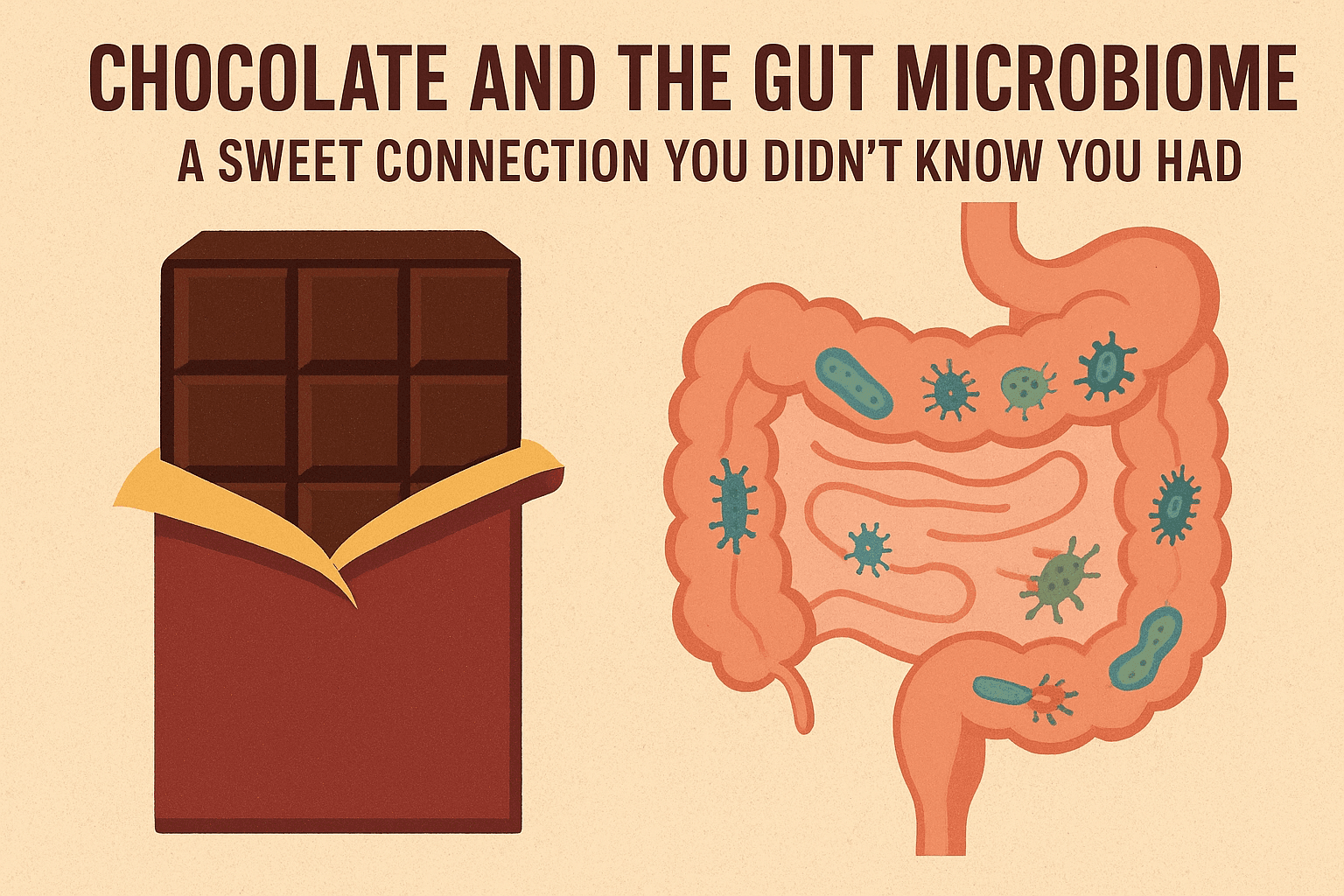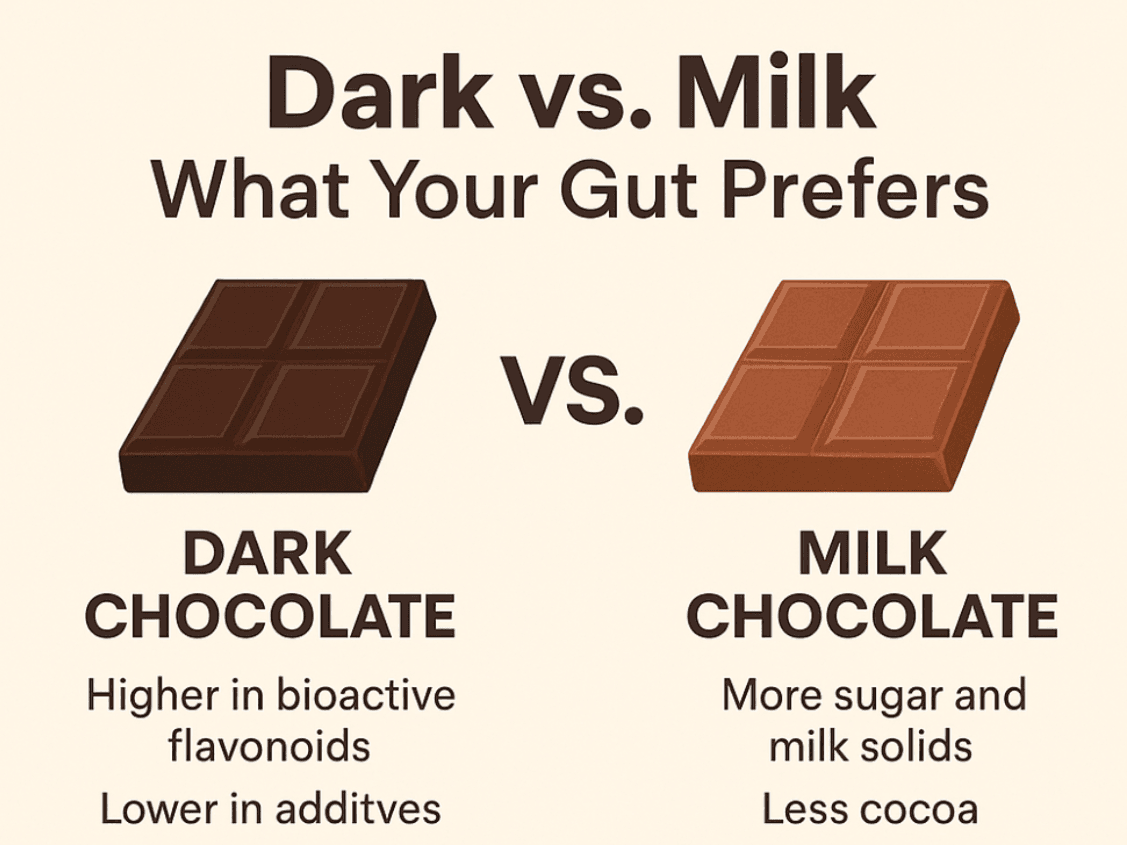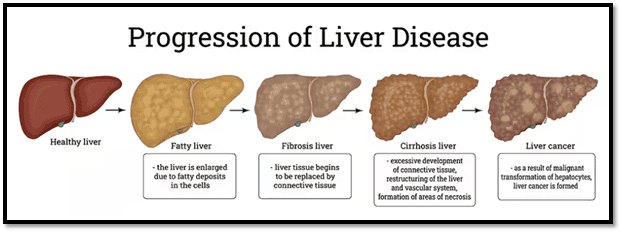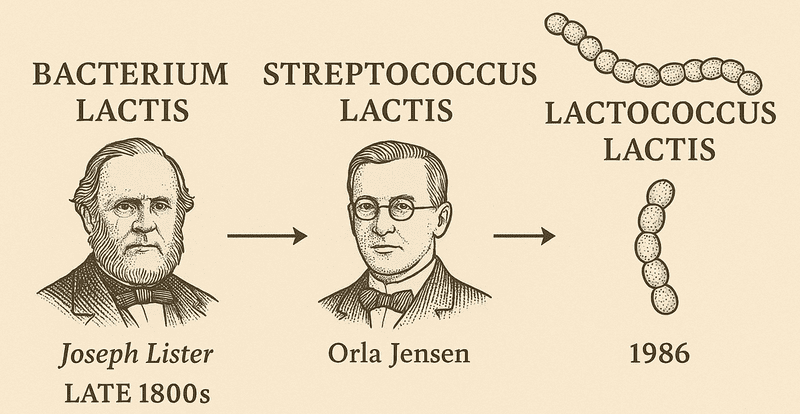A Sweet Obsession

For many of us in India, chocolate isn’t just a treat — it’s a part of our emotions. From being gifted during Diwali, Rakhi and birthdays to comforting us during late-night cravings or heartbreaks, chocolate is deeply woven into our lives. But beyond the indulgence, what if this beloved sweet snack was silently feeding something far more mysterious and vital — the trillions of microbes inside your gut?
Recent studies suggest that chocolate, especially the darker kind, isn’t just a mood lifter — it could be a microbiome modulator. And when your gut thrives, so does your brain, immunity, and even digestion. Let’s unwrap the science behind how chocolate speaks to your gut.
What’s Inside Chocolate?
All chocolate begins with cocoa beans — the seeds of the Theobroma cacao tree. These beans are rich in flavanols, polyphenols, and a compound called theobromine, which acts as a mild stimulant. The darker the chocolate, the more cocoa solids (and therefore flavonoids) it contains.
While milk chocolate typically contains about 20–40% cocoa and a fair amount of sugar and milk solids, dark chocolate (especially ≥70%) is richer in flavonoids, lower in sugar, and free from dairy. And these differences don’t just affect taste or calories — they directly influence how your gut responds.
Gut Microbiome 101: Your Inner Rainforest
Your gut isn't just a tube for digestion — it’s a vibrant ecosystem, home to over 100 trillion microorganisms, including bacteria, viruses, and fungi. This microbial community helps break down food, extract nutrients, produce vitamins, balance immunity, and even influence your mood.
Think of it like a rainforest — diverse, delicate, and dynamic. And like rain nourishes trees, the food you eat nourishes your gut flora. Some foods, like fiber-rich fruits and fermented veggies, act like fertilizers. Turns out, dark chocolate might too.
When Chocolate Meets Microbes
When you eat high-cocoa chocolate, something magical happens. The polyphenols and fiber-like compounds in cocoa aren’t fully digested by your stomach. Instead, they travel to the colon, where gut bacteria ferment them — producing short-chain fatty acids (SCFAs) like butyrate and propionate.
These SCFAs are gut superheroes. They help maintain the gut lining, reduce inflammation, and act as messengers in the gut-brain axis — a two-way communication line between your intestines and brain.
Studies show that consuming dark chocolate can increase beneficial gut bacteria like Lactobacillus and Bifidobacterium. These microbes are known for boosting mood, reducing anxiety, and supporting immunity. Cocoa compounds can also stimulate serotonin production, one of the key neurotransmitters for happiness, 90% of which is produced in the gut.
So yes — when you say chocolate makes you feel better, your gut might actually agree.
Dark vs. Milk: What Your Gut Prefers

Clinical trials have found that eating dark chocolate for just a few days can change your microbiota composition, increase microbial diversity, and improve gut function. One study showed that consuming 30 g/day of 85% dark chocolate for three weeks increased levels of Blautia obeum, a beneficial species associated with anti-inflammatory effects and better gut health.
Milk chocolate might give your taste buds a quick hit, but it’s dark chocolate that keeps your gut happy in the long run.
How Much (and When) Should You Eat?
Science suggests that around 10–30 g of dark chocolate per day — roughly one or two small squares — is enough to derive microbiome benefits without overloading on calories, fat, or caffeine. More than that, the health benefits may be cancelled out by excess sugar or stimulants.
What’s also interesting is when you eat it. Avoiding chocolate late at night might help, since eating sugar-rich foods too close to bedtime can disrupt your circadian gut rhythm and affect microbial activity. Mid-morning or early afternoon seems to be the sweet spot.
Final Bite for the Day
Chocolate isn’t just a guilty pleasure — it could be a functional food, especially if you choose wisely. Its influence on gut microbes, mood, and immunity is backed by emerging science. That said, not all chocolates are created equal.
If you're trying to be kind to your gut (and brain), here are a few simple takeaways:
- Choose chocolate with ≥70% cocoa content — it’s richer in gut-loving polyphenols.
- Stick to 10–30 g per day — moderation matters.
- Pair it with fiber-rich foods like oats or banana to boost microbial fermentation.
- Avoid ultra-processed or sugar-heavy versions, especially late at night.
So the next time you reach for a piece of dark chocolate, remember — you’re not just indulging your sweet tooth. You’re giving your gut a reason to smile.
-Harshith Reddy
References
Tzounis, X., et al. (2011). Flavanol-rich cocoa products enhance beneficial bacteria in human gut. American Journal of Clinical Nutrition, 93(1), 62–72. https://doi.org/10.3945/ajcn.110.000075
Valladares-Diestra, K., et al. (2020). High-cocoa chocolate intake and gut microbiome diversity. The FASEB Journal, 34(S1), 1. https://doi.org/10.1096/fj.202002770RR
Parker, G., et al. (2020). The psychobiotic potential of cocoa polyphenols. British Journal of Nutrition, 124(3), 259–267. https://doi.org/10.1017/S0007114518003689
Rodriguez-Leyva, D., & Pierce, G. N. (2020). Impact of cocoa polyphenols on human health. Nutrients, 12(7), 1908. https://doi.org/10.3390/nu12071908
Biesiekierski, J. R., et al. (2022). Cocoa and human gut health. Critical Reviews in Food Science and Nutrition. https://doi.org/10.1080/10408398.2022.2130159
Biswas, A., et al. (2024). Exploring prebiotic potential of cocoa. International Journal of Food and Nutritional Sciences, 8(6), 155–160. https://doi.org/10.33545/26174693.2024.v8.i6h.1389


